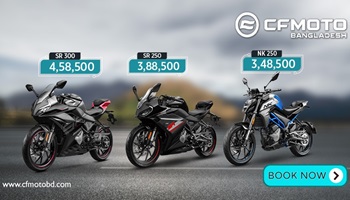What is a Speedometer in a Motorcycle: Function, Purpose
What is the purpose of the speedometer? What does the speedometer of a bike give? Does a motorcycle need a speedo? What controls the speedometer: Does the ECU control the speedometer? Can I drive with no speedometer? How is speedometer useful? Does tire size affect speedometer? Do I need a speedometer on my motorcycle? Can a speedometer go bad? Is speedometer repairable? Find more details about the motorcycle speedometer: its purpose, function, benefits, types, problems, and more.
What is Speedometer in Motorcycle?
When you break the word speedometer, you find 2 different words, speed & meter. Some people also call it a “speed meter”. It’s something that measures the speed. It is a gauge that measures the instantaneous speed of a bike or other vehicles and also displays it. Emerging in the twentieth century this device has been standardly used since 1910 onwards. Road vehicles use the regular speedometer while the other vehicles driving through different media, use other sorts of. For instance, boats use a pit log meanwhile aircraft use an airspeed indicator. Mr. Charles Babbage who is the inventor of the digital programmable computer, also invented the early type of speedometer.
What does a Bike Speedometer Do?
A speedometer is a very common device in a bike. You will find it in almost every motorcycle. It actually measures the instantaneous speed the motorcycle is cruising at and shows that on the meter on the dashboard. Bikes can have an analog speedometer or a more advanced electric speedometer. The biker can see how much speed he is cruising through. For example, if the meter clicks at 80 kmph it indicates that the bike is running at 80 kilometers per hour. When the bike runs idle, it clicks at 0 kmph. On the other hand, the digital speed meters directly show the number on the board. When the meter reads 90 kmph, that means the bike is going at a speed of 90 kilometers per hour.
How does a speedometer work on a motorcycle?
Generally, a speedometer utilizes a special sensor to measure the rotation of the bike wheels in motion. Then it converts that into a speed reading. There are some phases a speedometer works through to measure and display the speed. It includes: a speed sensor, signal processing, and display. Sometimes calibration or adjustment is also required.
Mechanical or Analog Speedometer
Uses a flexible cable connected to the front wheels. When the wheel turns, it also spins that cable. Hence, it drives a magnet inside the meter. The magnet generates a magnetic field while rotating. The magnetic field itself moves a needle located in the dial of the meter. The dial actually moves depending on the actual speed. When it moves clockwise the speed increases and when it shifts backward anti-clockwise, the speed decreases.
Electronic Speedometers
Speed sensors including a Hall effect sensor or a pickup coil are used in this type of speed meter. Those sensors are placed at the wheel or transmission. The sensor detects the rotation of a gear. It may also identify the movement through a magnet attached to the wheel. The bike’s onboard computer system receives a series of electrical pulses sent by the sensor. The wheel’s rotation speed complies with the frequency of these pulses. The system then processes those pulses. It brings in the overall calculation of the speed where the usage of wheel circumference and the gear ratio is necessary. In this type of meter, the speed is generally displayed on a digital screen. However, in some bikes, you can also find an analog gauge showing the speed although there is an electronic speed meter system.
When there is a modification that affects the size of the wheel or gearing, the system requires calibration to maintain accuracy.
Are Motorcycle Speedometers Accurate?
Motorcycle speedometers are well enough accurate. However, there is always a chance of marginal error. It varies from 0 to 10%. Sometimes, it can show you 8-10% higher speed than the actual one. Sometimes, when the bike cruises at a significantly higher speed, the difference between the meter reading and actual speed could be up to 10-15 mph (16-24 kmph).
What is the Difference between Odometer and Speedometer?
Both might be located near to each other but are different and serve various purposes. Let’s find out the difference between these 2 devices.
| Speedometer | Odometer |
| Displays the speed at which the vehicle is moving forward. | Measures and shows the total traveled distance of a vehicle or trip. |
| Important to know the exact speed. Indicates when you need to slow down or to accelerate. | Helps you know how much you have traveled, when you need to take the vehicle on service or to change your engine oil. Also assists determining mileage and oil cost. |
| Instantaneous reading type. | Overall cumulative reading type. |
| The sum can both increase and decrease regarding the speed. | The sum always increases unless having a reset. |
| Always located on the dashboard. | Generally located on the dashboard. But you may also find it in the instrument cluster. |
| No reset function is required or available. | Associated with a reset system which is optional and complex. |
| Measurement units are Miles per hour (mph) or Kilometres per hour (kmph). | Measurement units are Miles (M) or Kilometers (KM). |
What happens when a speedometer stops working?
A bad sensor or affected cruise control may cause problems with the function of the speedometer. The major reasons include a malfunctioning Speed Sensor, Issues with the ECU, Defective Wiring or Fuse, etc. If your odometer is fine but you’re having trouble with your speedometers, you may want to recheck: a broken speedometer gears, a faulty speed sensor, a damaged cable or wiring, as well as a bad engine control unit. Speedometers are repairable. The process includes either of these options: ECU replacement, fuse replacement, or trouble code clearing. Sometimes, your vehicle’s speed meter can be completely dead and needs to be replaced.
Can phones measure speed?
Sometimes, bikers or passengers do measure the bike or vehicle speed using their smart phones. One can do it, but when there is a fine and active speedometer that should be the primary device to check speed. In case, your speedometer isn’t working fine, you can check with your phone but that might not be precise enough. However, that should work. By the way, using a phone as a speedometer is also prohibited in some countries. So, don’t forget to check the local rules.























